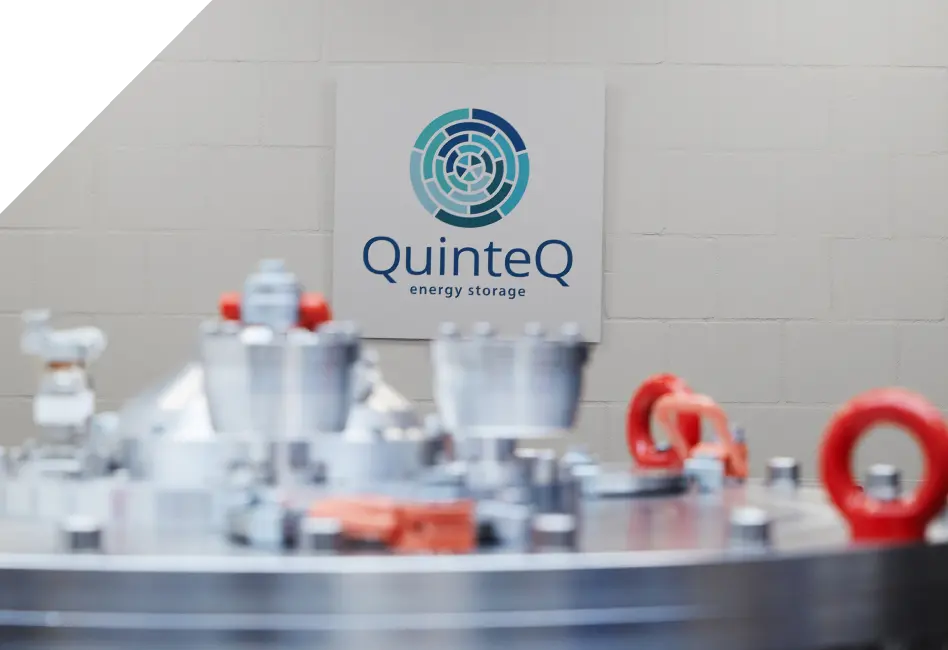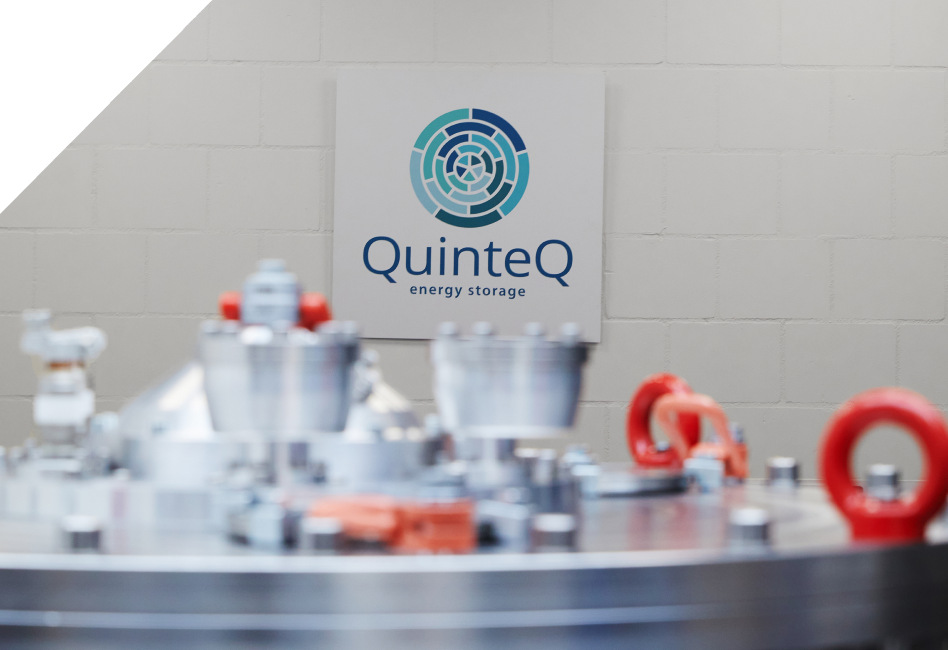We’re excited to share this feature from Het Financieele Dagblad, covering how QuinteQ CEO Paul Vosbeek brought the flywheel energy storage system to life, plotting its trajectory from Washington, U.S. to Culemborg, the Netherlands. Scroll down for the English version, and here’s a link to original article.

The Legacy of the ‘Star Wars’ Laser System Now
Powers Sustainable Construction
Following BAM, construction companies VolkerWessels and Dura Vermeer are also showing interest in Paul Vosbeek’s flywheel energy storage system, developed by QuinteQ. The device Was originally developed for the U.S. Defense, but now prevents grid congestion in construction.
What do Washington D.C., San Francisco, Seattle, and Culemborg have in common? At first glance, the furniture town on the Lek river hardly fits among these international American cities; however, they are all places where the Dutch economist and entrepreneur Paul Vosbeek resided during his career.
In Washington, Vosbeek destroyed old dollar bills and coins at a Dutch company for the Federal Reserve Banks. Later, in San Francisco, he transitioned to the energy sector and founded Real New Energy in 2010, a company focused on the development and consultancy of sustainable energy. From that company emerged QuinteQ Energy, the Culemborg-based company trying to help the Dutch construction industry with the electrification of equipment using flywheel technology.
Peak Load Absorbed
Vosbeek learned about flywheel technology as a means of storing and delivering energy at Boeing in Seattle. He had received a tip in the U.S. from a business associate, who told him that a technique for energy storage had been developed for the Strategic Defense Initiative (SDI), the missile shield with lasers in space initiated by U.S. President Ronald Reagan and later nicknamed “Star Wars”. This defense system against ballistic nuclear missiles died a quiet death, but inventions that were initially made for it that later proved useful for other purposes.
One such example is the vacuum-sealed flywheel from Boeing, which Vosbeek managed to license after receiving his associate’s tip. Now, there are fifteen people who work specifically for the construction sector on further developing this technological legacy from the 80s and 90s. This work is being done in a former Harley Davidson dealership on a large industrial estate in Culemborg. Here, in two containers, self-built steel flywheels stand gleaming.
QuinteQ’s mechanical storage method is based on motion, or kinetic energy. The rapidly-spinning flywheel sits in a vacuum vessel, stores electrical energy in motion, and delivers that kinetic energy to the construction site when needed at lightning speed, for example, when a tower crane has to lift a heavy object, or a construction lift needs to be raised. By absorbing peak loads from the grid like this, the grid is less likely to become overloaded. This grid congestion is one of the obstacles to the green energy transition, which builders like BAM, VolkerWessels, and Dura Vermeer are aiming towards. Together with De Vries en Verburg Bouw and Hemubo, they are participating in a pilot project with QuinteQ, which will be completed in a few months.
Relieving the Grid
Construction companies, especially the large ones, are accelerating the electrification of their equipment. This is due to new emission regulations and the requirements that clients like Rijkswaterstaat set for contracts. Cities are limiting permitted emissions during construction activities.
This makes systems like QuinteQ’s interesting for construction companies. During the construction of a residential tower in Eindhoven, VolkerWessels’ employees recently saw for themselves on a screen how the power peak caused by a tower crane was ‘shaved’ by the flywheel. With a burst of kinetic energy, the flywheel provided enough counterbalance to relieve the grid connection.
The grid operator, TenneT, does not know QuinteQ very well yet, but a spokesperson says it seems to be “a nice piece” in the puzzle of electrification in the construction industry. Vosbeek acknowledges that there is no “silver bullet” in the energy transition, “but rather a single buckshot”. “We certainly don’t claim to have found the holy grail, but we do offer tools for it.”


